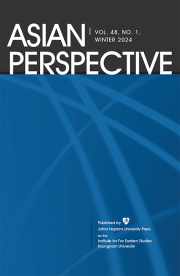Research on the economic relations between the European Union (EU) and the People’s Republic of China (China) has long been dominated by a focus on the trade relationship between both actors (Algiero 2002; Gaenssmantel 2012; Men 2013; Smith 2014; Heron 2007; Zhang 2014). This literature highlights that the trade relationship between China and the EU is highly institutionalized at the EU level and is managed through a network of high-level economic and trade dialogue as well as sectoral dialogues, working groups, networks, and platforms (Ash 2007; van der Harst 2023). However, the relationship is also at a member state (MS) level, which has its own trade relationships with China and its own concepts of sovereignty, human rights, and environmental standards (Goulard 2020; Cui 2018). This creates what Smith (2014, 39) calls the hybrid nature of the EU economic diplomacy in terms of its relationship with China. This hybrid nature creates a situation where the EU Commission depends on MS consensus and vice versa regarding policy action toward China (Freeman 2022; Woolcock 2012; Voogsgeerd 2023). This is particularly true with trade and investment regulations as common commercial policy is a Commission-level competence. At the same time, MS plays a major role in promoting or preventing economic relations with China (Gottwald 2010; Reilly 2017; Farnell and Irwin Crookes 2016; Liu and Zhang 2020).
A New China: China as a Major Investor in Europe
After the 2008 financial crisis, China and the EU economic relationship shifted, with the EU now seeing China as a source of investment rather than simply a source of cheap consumer goods (Clegg and Voss 2016; Meunier, Burgoon, and Jacoby 2014; Meunier 2014a, 2014b). However, from the onset of these investments, scholars began to focus on the clear difference in the investment pattern across member states. A comparison between Central and Eastern European (CEE) states to those in the West showcases a high level of Chinese investments and involvement in the former, in particular in strategic sectors and infrastructure development across in areas such as power plants, energy networks, renewables, construction or reconstruction of roads, highways, railways, and digital infrastructure (Matura 2019; Jacoby 2014; Liu 2013; Szunomar 2020, 2023).
With the launch of the 16+1 framework in 2012 and the Belt and Road Initiative (BRI) in 2013, there was an increased focus on Chinese investment in CEE (Zhao 2020; Pavlićević 2018; Bieliński, Markiewicz, and Oziewicz 2019). As most of the MS and non-MS in this region would be affected by the BRI, scholars believe that the investment pattern would follow the route of this huge infrastructure project (Brown 2020; Pacheco 2018). However, the COVID-19 pandemic and the Russian invasion of Ukraine in 2022 have brought into question the sustainability of the BRI in Europe, including CEE, and require scholars to understand Chinese investment beyond the BRI.



